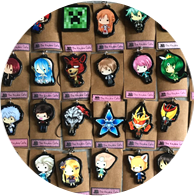Plant Convergence 4 is almost upon us! This international plant show is going to be the biggest, most dynamic one yet, with as many as 90 local and overseas merchants from Thailand, Ecuador, Indonesia, Taiwan, and Vietnam.
Plant Convergence 4: Philippine International Plant Show
Plant Convergence isn’t just an event—it’s a movement that focuses on community, growth, and sustainable plant care.





